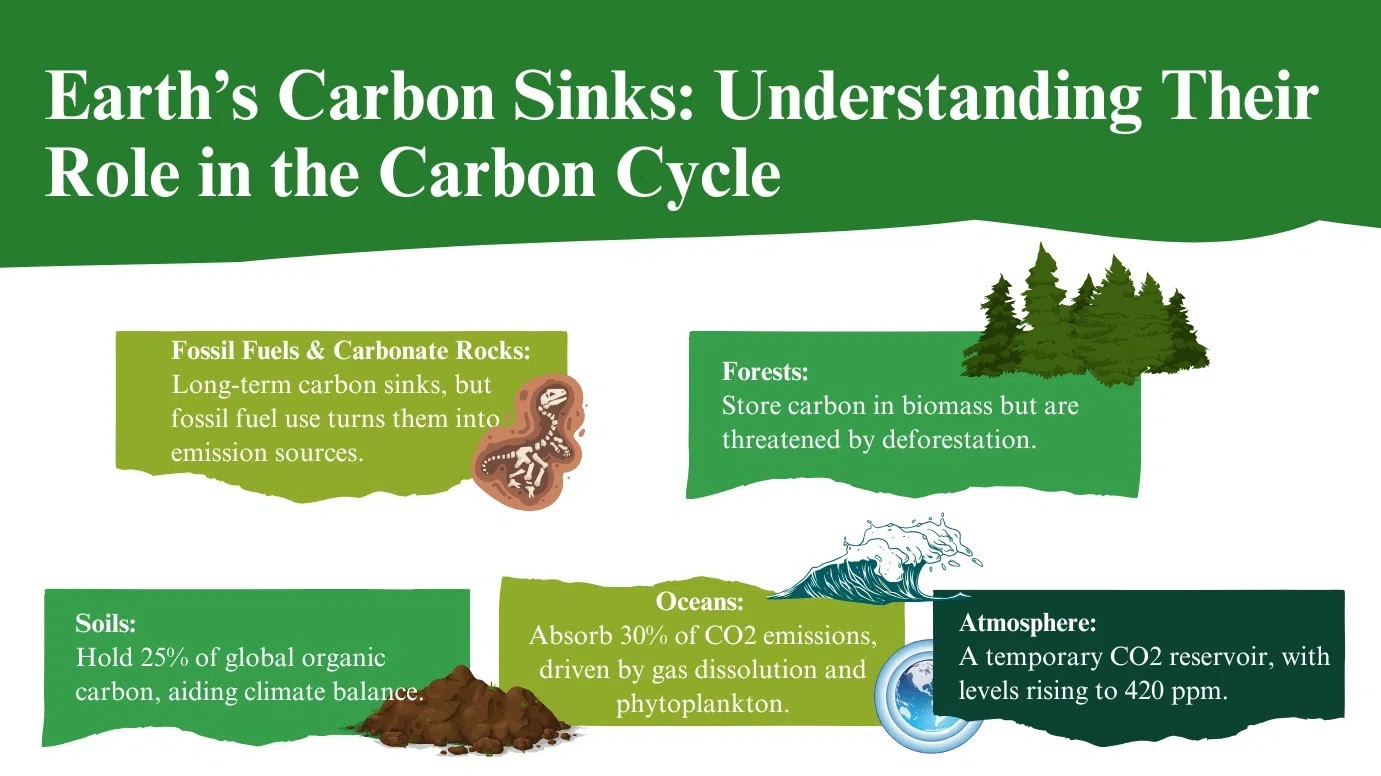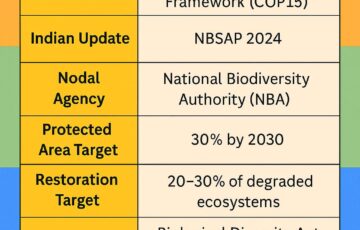Arctic Carbon Sink Turns Source Amid Rising Wildfires
Why in the News ?
A new study reveals the Arctic Boreal Zone has begun releasing more carbon than it absorbs due to intensifying wildfires and permafrost thaw, marking a shift from carbon sink to source and raising concerns over climate change feedback loops.
Intensifying Wildfires Worldwide:
- Wildfires across the S. (Texas, Oklahoma, California), Japan, and India have caused massive destruction, claiming lives, homes, and natural ecosystems.
- California’s Eaton Fire destroyed 14,000 structures and burned 16,000 hectares.
- Japan’s February wildfire affected over 2,900 hectares near Ofunato City.
- India’s Uttarakhand reported 5,315 forest fires in one year.
- Wildfires released 800,000 tonnes of carbon in January 2025—four times more than a decade ago.
Arctic Boreal Zone’s Troubling Shift:
- The Arctic Boreal Zone (ABZ), once a major carbon sink, is now releasing carbon.
- A study (1990–2020) found 30% of ABZ now emits more carbon than it absorbs.
- Alaska (44%), Northern Europe (25%), and Siberia (13%) are major emission zones.
- The 2003 Siberia and 2012 Canada wildfires significantly contributed to this shift.
Climate Feedback Loop and Global Impact:
- Thawing permafrost in the Arctic leads to CO₂ emissions due to decomposition.
- Higher temperatures, longer dry spells, and early heatwaves fuel wildfires.
- The resulting carbon emissions exacerbate global warming, leading to more fires.
- This dangerous loop threatens the planet’s climate regulation systems and intensifies climate change.





